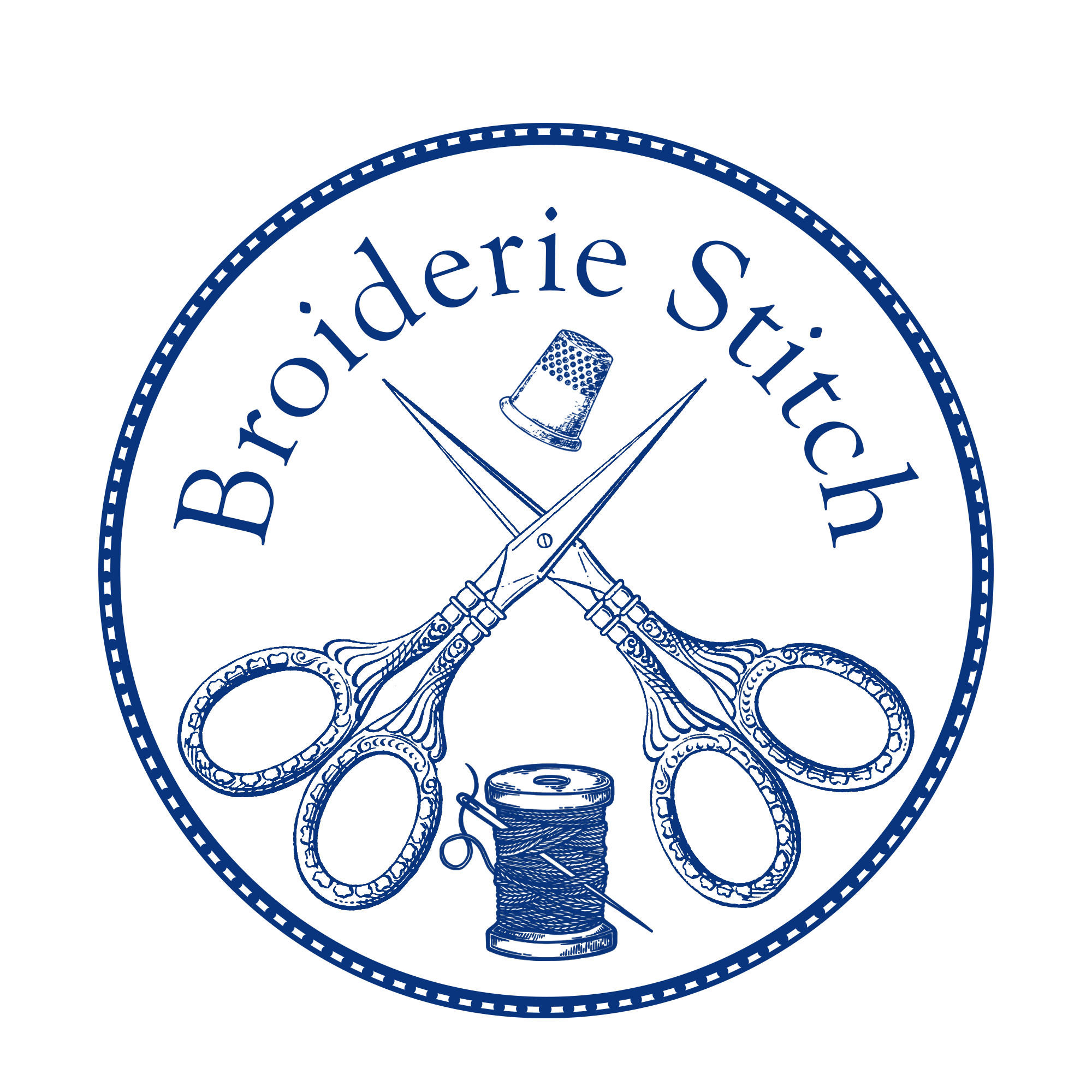
The band sampler is nearly complete! The line being worked above is double feather stitch, one of the feather stitch variations mentioned in our last post. There are many ways to change up feather stitch, and this is one of the simplest and most versatile. Instead of changing direction with every stitch, two stitches are worked in one direction before heading the other way. This makes for a wider band with more branches than conventional feather stitch. It would be great for an undersea scene or a dense thicket as well as less representative applications.

I decided early on the very last line of the sampler should be something rather dense and firm, to give the design a good strong border. Closed herringbone stitch was a shoo-in. Herringbone stitch is another very versatile stitch (and one I’ll be exploring much more with the Deerfield Butterfly) and is seen in embroidery styles from all around the world. Unlike the open herringbone stitched in orange, closed herringbone uses the same holes as the previous stitches to stay close and compact. It comes across as dense and intricate instead of open and lacy, which was perfect to give a little weight to the bottom of this piece.

Here’s a shot of the sampler off the embroidery frame and ready to be mounted. Although I could see most of the stitches, this piece was just a bit longer than the area of my frame, so this is the first time could see how all the colors worked together. The transitions worried me at first, but with all the diversity in stitches and colors, I think they tie it together well. I often work with just one or a few stitches in a single design, so using so many all together was a bit of a challenge. There’s a few stitches I might swap or adjust were I to stitch it again, but overall it looks fairly even.
The very last step after removing it from the frame and ironing is to mount it to a sturdy board. The process is pretty similar to lacing a corset; big herringbone stitches are done along the edges of the fabric and then tightened to pull it snug against the board with no wrinkles. The whole process is a bit fiddly; snugging up the fabric, checking to make sure nothing has pulled or twisted on the front, and snugging it up some more take some time and aren’t very glamorous. Once the two sides are secured, the top and bottom get the same treatment. Then a backing is stitched on to cover those utilitarian stitches. Finally a loop is added for hanging and it’s finished!

There are several things about this sampler that were a first for me – my first flat piece using perle cotton (though I’ve used it on temari, I hadn’t stitched fabric with it), my first time using a grid of dots to lay out a design, and my first completed sampler. Many of the stitches were new to me, as well. Embroidery floss will always be my mainstay, but for a strong line and great definition, there really is nothing better than perle cotton. I liked the grid of dots; I don’t think I could have gotten such neat edges any other way without working on Aida cloth or counting threads. Overall, this was a fun project and a nice break from the intensive shading of the iris. Maybe one day we’ll offer it (or something quite like it) as a kit – but for now, it’ll hang in the studio as a teaching aid.

